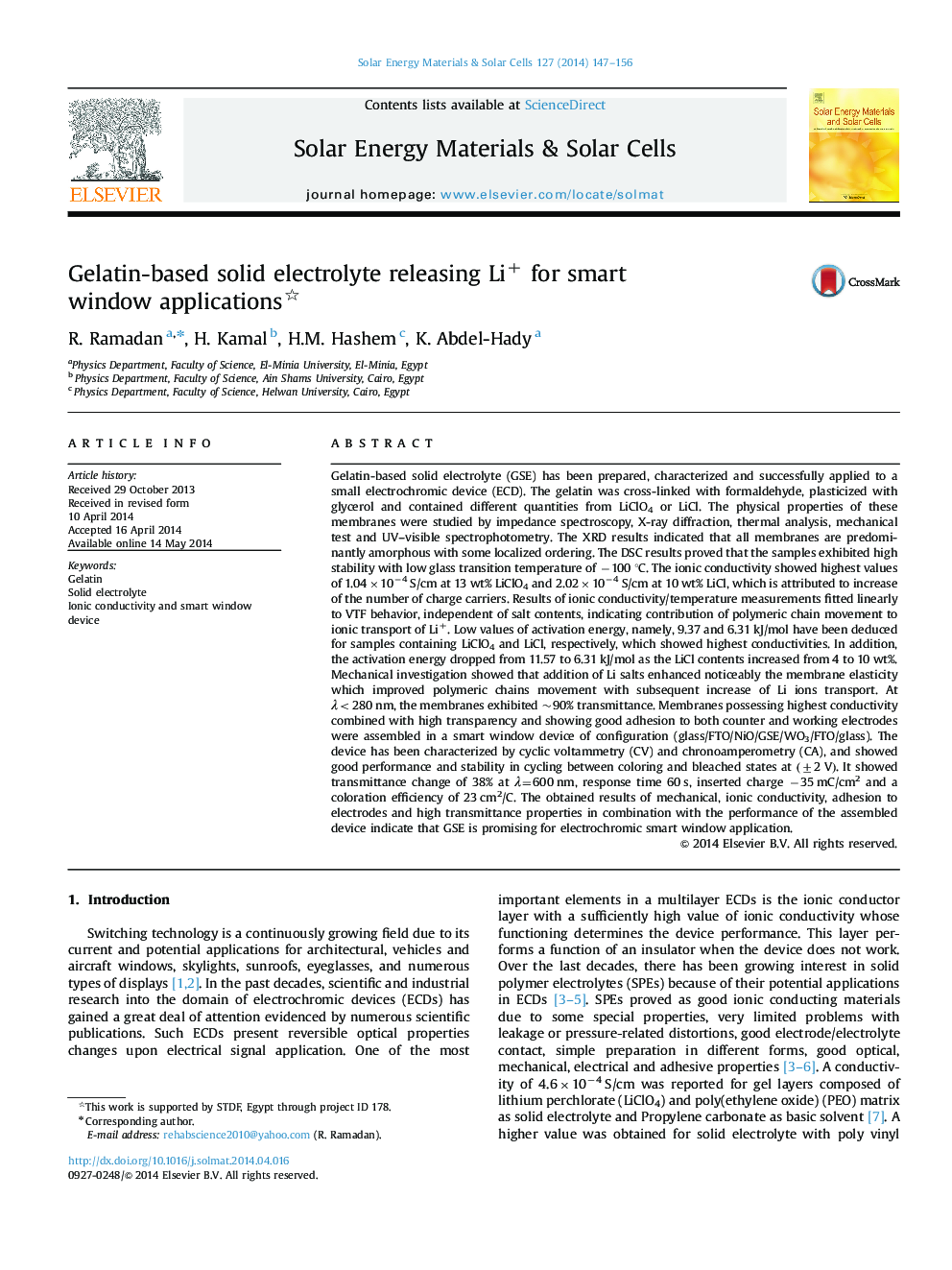| Article ID | Journal | Published Year | Pages | File Type |
|---|---|---|---|---|
| 78143 | Solar Energy Materials and Solar Cells | 2014 | 10 Pages |
•Gelatin based solid electrolyte doped with Li+ has been prepared.•Physical properties (structural–conductivity–transmittance–thermal analysis–mechanical test) have been conducted.•Fabrication of an electrochromic device and its characterization were performed.
Gelatin-based solid electrolyte (GSE) has been prepared, characterized and successfully applied to a small electrochromic device (ECD). The gelatin was cross-linked with formaldehyde, plasticized with glycerol and contained different quantities from LiClO4 or LiCl. The physical properties of these membranes were studied by impedance spectroscopy, X-ray diffraction, thermal analysis, mechanical test and UV–visible spectrophotometry. The XRD results indicated that all membranes are predominantly amorphous with some localized ordering. The DSC results proved that the samples exhibited high stability with low glass transition temperature of −100 °C. The ionic conductivity showed highest values of 1.04×10−4 S/cm at 13 wt% LiClO4 and 2.02×10−4 S/cm at 10 wt% LiCl, which is attributed to increase of the number of charge carriers. Results of ionic conductivity/temperature measurements fitted linearly to VTF behavior, independent of salt contents, indicating contribution of polymeric chain movement to ionic transport of Li+. Low values of activation energy, namely, 9.37 and 6.31 kJ/mol have been deduced for samples containing LiClO4 and LiCl, respectively, which showed highest conductivities. In addition, the activation energy dropped from 11.57 to 6.31 kJ/mol as the LiCl contents increased from 4 to 10 wt%. Mechanical investigation showed that addition of Li salts enhanced noticeably the membrane elasticity which improved polymeric chains movement with subsequent increase of Li ions transport. At λ<280 nm, the membranes exhibited ~90% transmittance. Membranes possessing highest conductivity combined with high transparency and showing good adhesion to both counter and working electrodes were assembled in a smart window device of configuration (glass/FTO/NiO/GSE/WO3/FTO/glass). The device has been characterized by cyclic voltammetry (CV) and chronoamperometry (CA), and showed good performance and stability in cycling between coloring and bleached states at (±2V). It showed transmittance change of 38% at λ=600 nm, response time 60 s, inserted charge −35 mC/cm2 and a coloration efficiency of 23 cm2/C. The obtained results of mechanical, ionic conductivity, adhesion to electrodes and high transmittance properties in combination with the performance of the assembled device indicate that GSE is promising for electrochromic smart window application.
